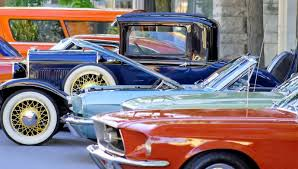When it comes to insuring older cars, the approach differs significantly from insuring newer models. Older vehicles typically have lower market values, which can impact the kind of coverage you need. Understanding the right insurance options can save you money while ensuring that your car is adequately protected. If you’re looking for local advice, it’s worth exploring auto insurance in Arlington, TX, where providers can offer tailored policies for various needs.
Why Insurance for Older Cars is Different
As cars age, their value depreciates. This means that what was once a highly valuable asset is now worth considerably less, which impacts the type of insurance coverage that makes sense. Insuring an older car isn’t just about protecting your vehicle; it’s about making sure you’re not overpaying for coverage you might not need.
In many cases, the standard insurance policies recommended for newer cars may not be the best fit for an older vehicle. Older cars often require different considerations, such as whether comprehensive and collision coverage are still necessary, or if liability coverage is sufficient. The goal is to strike a balance between adequate protection and cost-effectiveness.
Types of Coverage Suitable for Older Cars
When selecting car insurance for an older vehicle, it’s important to consider various types of coverage that might be appropriate. Each type of coverage has its benefits, but not all of them may be necessary depending on the car’s age and condition.
Liability Coverage is essential and required by law in most states. This coverage pays for damage or injury you cause to others in an accident. It’s generally advisable to maintain sufficient liability coverage regardless of your vehicle’s age.
Collision Coverage covers damage to your car resulting from a collision, whether with another vehicle or an object. However, for older cars with low market value, the cost of this coverage might exceed the car’s worth. It’s important to evaluate if the cost of collision coverage justifies its benefits.
Comprehensive Coverage protects against non-collision incidents such as theft, vandalism, or natural disasters. Like collision coverage, it may not be cost-effective for older cars. If your car’s value is minimal, you might consider dropping this coverage.
Uninsured/Underinsured Motorist Coverage is crucial for protection against drivers who lack adequate insurance. This coverage can be especially valuable if you’re involved in an accident with an underinsured driver, ensuring your expenses are covered.
Classic Car Insurance might be an option if your older car is considered a classic or collectible. This type of policy often offers agreed-value coverage, which can be more beneficial than standard insurance for cars with historical value.
Factors to Consider When Choosing Insurance for Older Cars
Choosing the right insurance for an older car involves several factors. One of the primary considerations is the car’s current market value. If your vehicle has depreciated significantly, it may not be worth investing in comprehensive or collision coverage. On the other hand, if the car has maintained some value, these coverages might still be necessary.
The frequency of use also plays a role. If the car is only driven occasionally, you might qualify for a low-mileage discount, making it more affordable to maintain higher levels of coverage. Conversely, if the car is used regularly, maintaining comprehensive coverage could be prudent.
Repair costs should also be considered. Older cars can be more expensive to repair due to the difficulty in finding parts. If repairs are likely to be costly, maintaining collision and comprehensive coverage could be a wise choice.
The storage and security of the vehicle can influence insurance needs. Cars stored in a garage or secure location may qualify for lower premiums, and you might decide to adjust your coverage based on the reduced risk of theft or damage.
Cost-Effective Tips for Insuring Older Cars
There are several ways to save money when insuring an older car. One effective strategy is adjusting deductibles. By raising your deductible, you can lower your premium, but it’s important to ensure that you can afford the higher out-of-pocket cost in the event of a claim.
Another tip is bundling policies. If you have multiple insurance needs, such as home and auto insurance, consider bundling them with the same provider to take advantage of discounts.
Low mileage discounts are another cost-saving option. If you drive your older car infrequently, inform your insurance provider, as they might offer a discount for low usage.
Finally, consider dropping unnecessary coverage. If your car’s value has significantly depreciated, it might make sense to eliminate collision and comprehensive coverage, especially if the potential payout would be less than your annual premiums.
Selecting the best car insurance for an older vehicle involves careful consideration of the car’s value, usage, and potential repair costs. By tailoring your insurance coverage to your specific situation, you can ensure that your older car is adequately protected without overpaying. Always assess your unique needs and consult with an insurance professional to find the best policy for your circumstances. This approach will help you maintain the right balance of protection and affordability.



